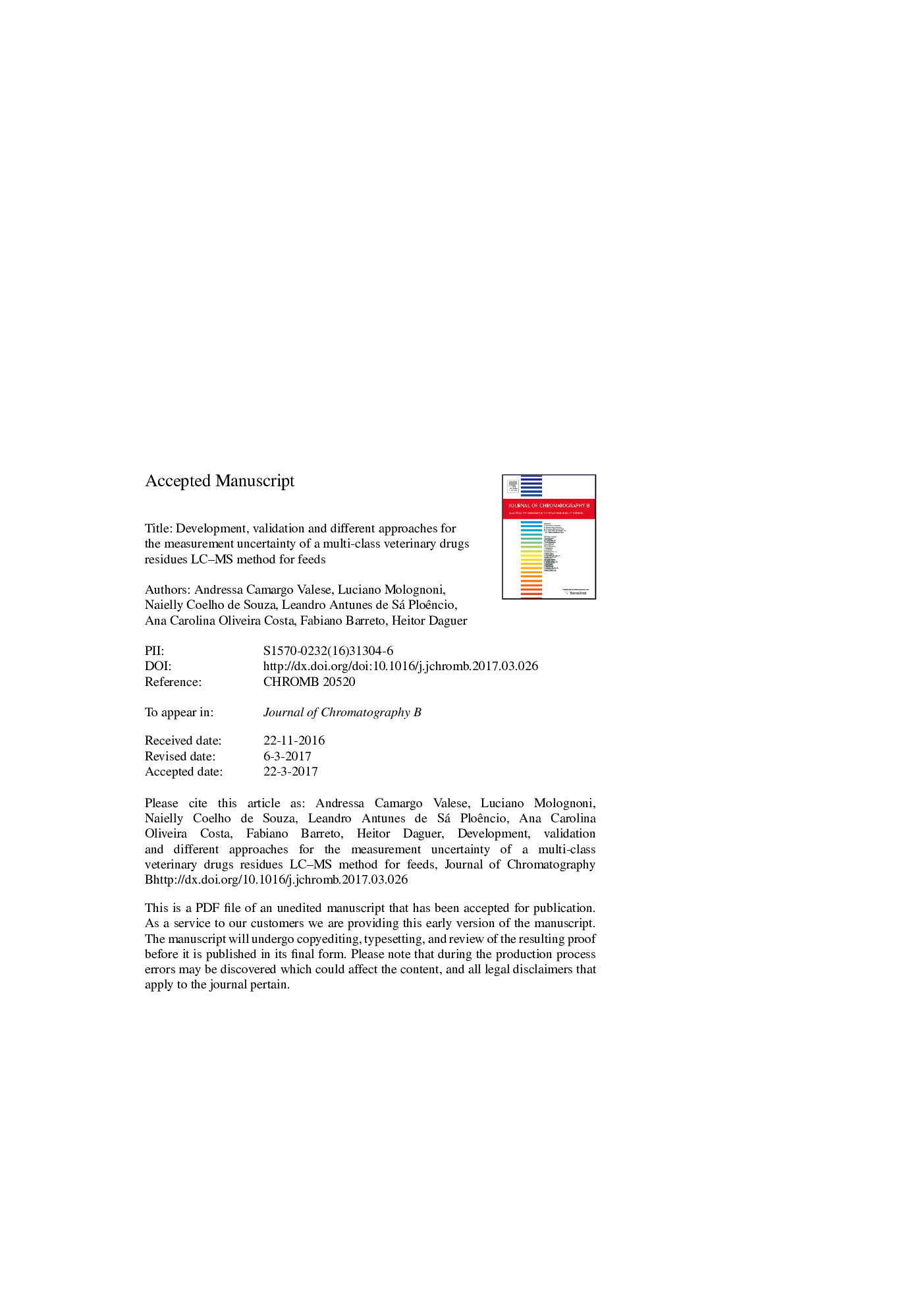| Article ID | Journal | Published Year | Pages | File Type |
|---|---|---|---|---|
| 5136354 | Journal of Chromatography B | 2017 | 44 Pages |
Abstract
A sensitive method for the simultaneous residues analysis of 62 veterinary drugs in feeds by liquid chromatography-tandem mass spectrometry has been developed and validated in accordance to Commission Decision 657/2002/EC. Additionally, limits of detection (LOD), limits of quantitation (LOQ), matrix effects and measurement uncertainty were also assessed. Extraction was performed for all analytes and respective internal standards in a single step and chromatographic separation was achieved in only 12 min. LOQ were set to 0.63-5.00 μg kgâ1 (amphenicols), 0.63-30.00 μg kgâ1 (avermectins), 0.63 μg kgâ1 (benzimidazoles), 0.25-200.00 μg kgâ1 (coccidiostats), 0.63-200.00 μg kgâ1 (lincosamides and macrolides), 0.25-5.00 μg kgâ1 (nitrofurans), 0.63-20.00 μg kgâ1 (fluoroquinolones and quinolones), 15.00 μg kgâ1 (quinoxaline), 0.63-7.50 μg kgâ1 (sulfonamides), 0.63-20.00 μg kgâ1 (tetracyclines), 0.25 μg kgâ1 (β-agonists), and 30.00 μg kgâ1 (β-lactams). The top-down approach was adequate for the calculation of measurement uncertainty for all analytes, except the banned substances, which should be rather assessed by the bottom-up approach. Routine analysis of different types of feeds was then carried out. An interesting profile of residues of veterinary drugs among samples was revealed, enlightening the need for stricter control in producing animals. Among the total of 27 feed samples, 20 analytes could be detected/quantified, ranging from trace levels to very high concentrations. A high throughput screening/confirmatory method for the residue analysis of several veterinary drugs in feeds was proposed as a helpful control tool.
Keywords
Related Topics
Physical Sciences and Engineering
Chemistry
Analytical Chemistry
Authors
Andressa Camargo Valese, Luciano Molognoni, Naielly Coelho de Souza, Leandro Antunes de Sá Ploêncio, Ana Carolina Oliveira Costa, Fabiano Barreto, Heitor Daguer,
